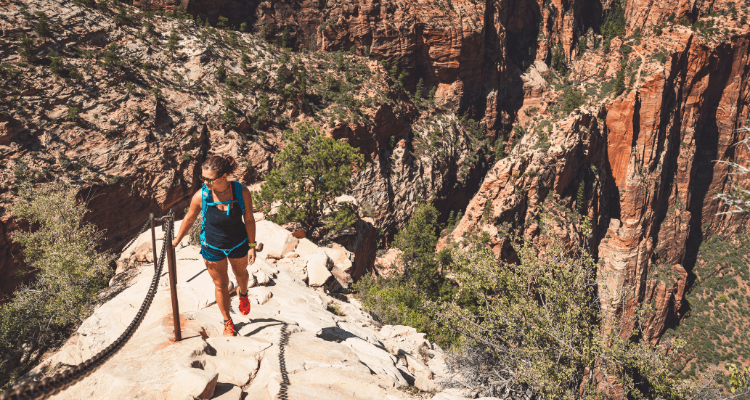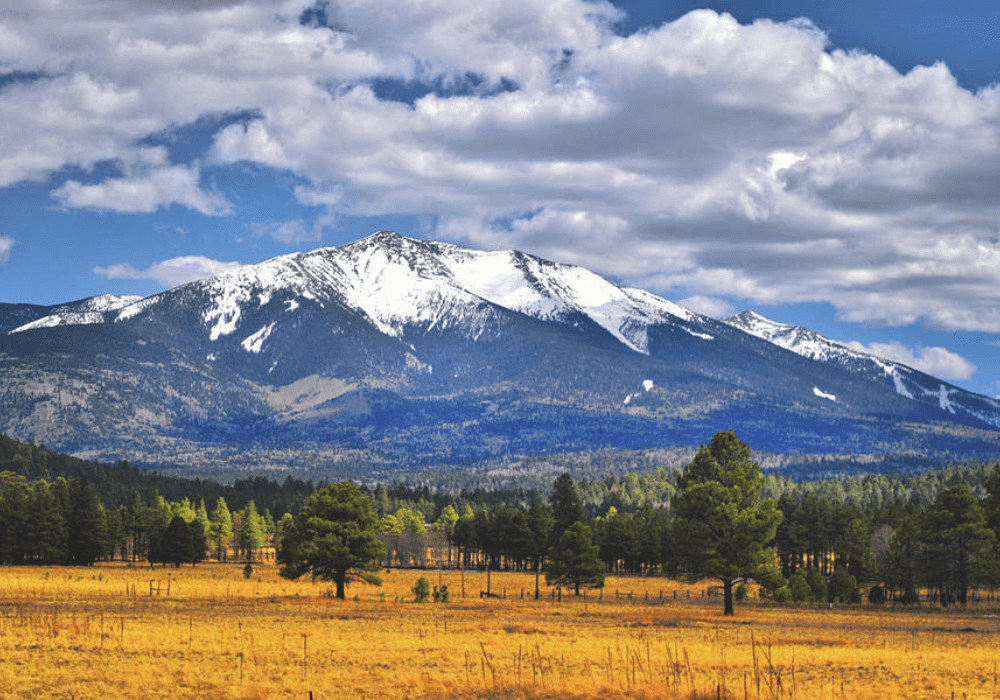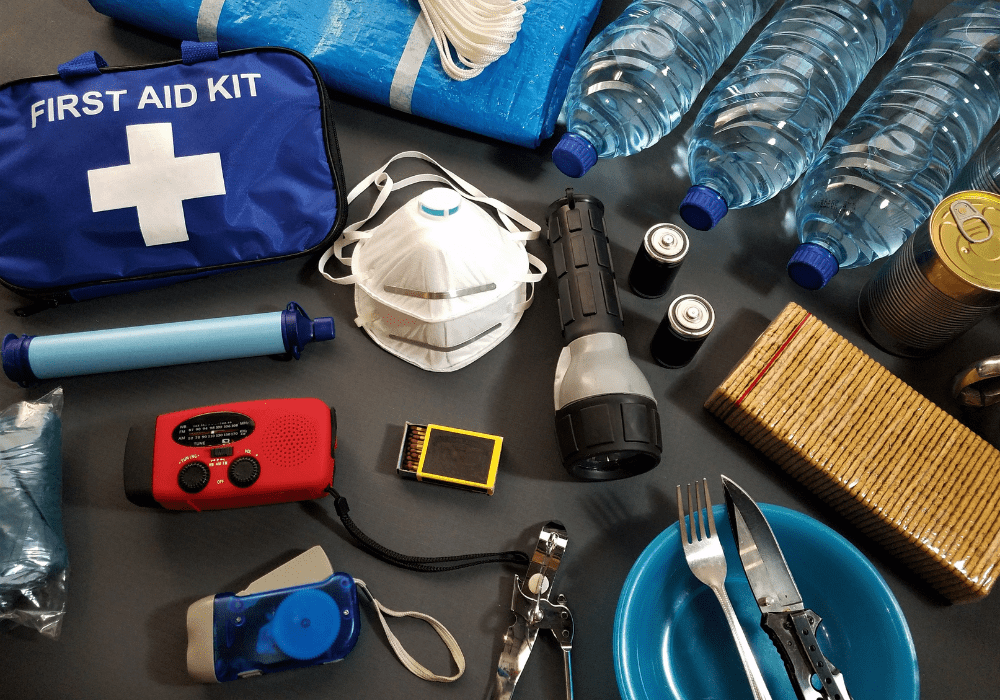
Day Hiking Checklist – Everything You’ll Need For Most Hikes
Day hiking is an awesome way to explore nature alone and reconnect with yourself or even with friends and family. Whether you go deep into the woods or stay close to home, the outdoor adventures to be had are plentiful; many state and national parks offer broad trail networks, as does national forest and BLM land.
To determine what you need to bring on a day hike, think about hiking distance, how remote the location is and what the weather forecast looks like. In general, the longer and/or more remote the hike is and/or the more inclement the weather, the more clothing, gear, food and water you’re going to need. If you’re just getting into day hiking, be sure to read our How to Get Into Hiking article before you hit the trail.
Table of Contents
How to Use This Day Hiking Checklist
While you’re prepping, use this day hiking checklist to ensure you don’t forget to pack anything important.
Here are some notes on how to best use this list:
The Essentials: Items that are part of the Essentials are marked by an asterisk (*). The exact items you take can be tailored to your trip based on weather, difficulty, duration and distance from help. To learn more, see our article on Day Hike Essentials.
This checklist is deliberately comprehensive and created for day hikes in backcountry where self-sufficiency is important to your survival. It includes more items than you’re likely to need for short treks in or near developed areas, like city parks, and state recreation areas though you can certainly adapt it to your needs for these trips.
Hiking Gear Carrier
Your backpack is the primary piece of gear for day hiking. One that holds at least 12–21 liters of gear is fine for short, simple hikes, while something larger is better for longer hikes where more food, water, clothing and gear is required.
- Backpack *
Weather Appropriate Clothing & Footwear (moisture wicking and layers)
Always check the forecast and dress accordingly. Always be prepared for changing weather or an unplanned night out, pack extra clothes beyond your trips requirements. For footwear, determine what to wear based on the terrain. On gentler hikes or smooth trails, hiking shoes or trail runners are just fine. For hikes on more rocky, rugged trails, boots will provide more ankle and foot support.
- Moisture Wicking Underwear *
- Moisture Wicking Tshirt
- Quick Drying Trousers or Shorts
- Lightweight Long Sleeve Shirt (for sun & bugs)
- Lightweight Fleece or Jacket
- Trail Shoes or Boots (suited for specific terrain)
- Socks *(synthetic or wool, should come up beyond your ankle for bugs, plants and boots)
- Extra light pair of clothes beyond the minimum. (I’ll typically leave these in the car for post hike freshness or keep them in my pack on backcountry hikes)*
Additional Day Hike Clothing Items for Rainy or Cold Weather
- Rain Jacket or Pants
- Long Johns
- Warm insulated Jacket or Vest
- Fleece Pants
- Gloves
- Warm hat
Food & Water
Pack snacks like energy bars, jerky and nuts that you can eat easily on the trail. Perhaps even a sandwich. For water, you can usually start with at least two liters per person for the day, but adjust the amount depending on length and intensity of the hike, weather conditions, your age, sweat rate and body type.
- Water bottles, hydration pack *
- Water filter (life straw or pump filter)/purifier/chemical treatment
- Trail munchies *
- Post Hike Snacks
Navigation
- Map *
- Compass
- Flashlight (not your phone)
- Binoculars
- GPS * (optional – I always have one in my pack)
- Navigation beacon ( optional – Depends on where you’re going)
- Altimeter (optional – depends on where you’re going)
- Route description from Guide Book or Internet (optional -depends on where you’re going)
First Aid & Emergency
- First aid kit *
- Lighter, Matches or Other fire starter
- Thermal Blanket
- Emergency Shelter
- Whistle
- Two Itineraries (one left in car under the seat, the other left with a friend)
- Repair Kit (Duct Tape, Zip Ties, Paracord)
- Gun, Knife, Pepper Spray or Baton (never know who or what’s lurking) *
- Two Way Radio
Health & Hygiene
- Biodegradable Toilet Paper
- Trowel (optional – if hiking more than 10 miles)
- Sunscreen
- Lip Balm (spf)
- Sun hat or Shemagh *
- Sunglasses *
- Insect Repellent (I prefer essential oils)
- SheWee
- Baby Wipes
- Garbage Bag
- Alcohol or Antiseptic Wipes *
- Blister Treatment
Day Hike Miscellaneous Items
- Outdoor Adventure Journal (don’t forget a pencil or pen) *
- Camera
- Field Guide
- Credit Cards/Cash
- ID
- Cellphone





Pingback: 7 Epic Hiking Trails In 7 Amazing US National Parks - AdventureHacks
Pingback: How Spending Time Outdoors Helps Better Your Mental Health - ClickoHealth
Pingback: 10 Mind-Blowing Health Benefits of Hiking
Pingback: United States of America 12 Best State Parks for Hiking - AdventureHacks
Pingback: Mike Dillard
Pingback: Wandering Pollack